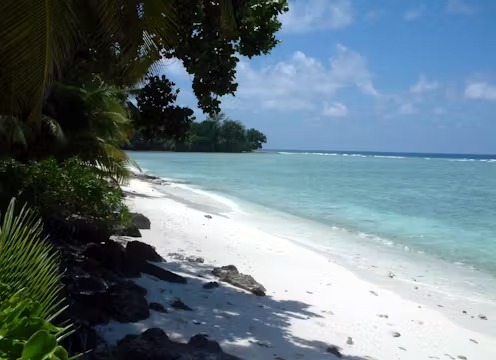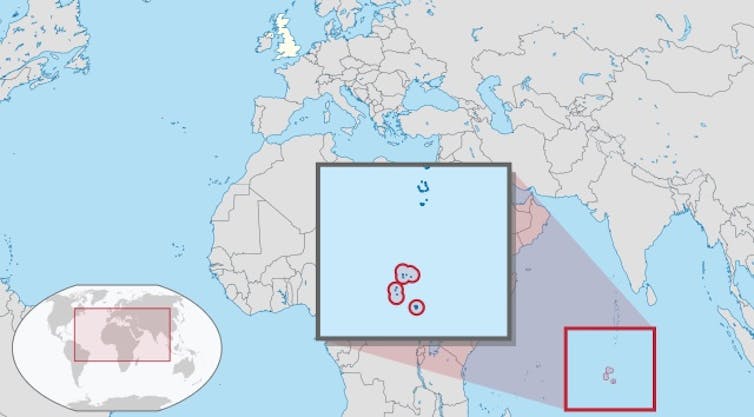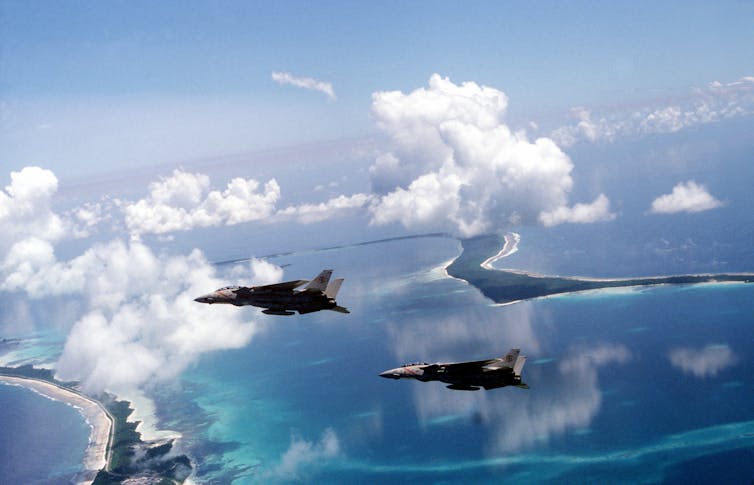The UK government has announced that it will transfer sovereignty of a remote cluster of islands in the Indian Ocean to Mauritius. The final treaty outlining the transfer of the Chagos Islands, where there is a significant US military base, is expected to be announced in the coming months.
Negotiations for this transfer began in 2022 under the UK’s then foreign secretary, James Cleverly, but were paused the following year by his successor, David Cameron.
The talks resumed in 2024 under the new Labour government, with the recent agreement marking the end of a longstanding sovereignty dispute between the UK and Mauritius.
The news has sparked significant debate. Chagossians are concerned that they, as the Indigenous people forcibly removed from the islands to make way for the military base between 1967 and 1973, have not been included in the negotiations.
Others view the move as a betrayal of British interests. Mauritius is a country that maintains close ties with China, so critics argue this transfer could open the door to increased Chinese influence in the Indian Ocean.
What is often missing from these discussions, however, is the critical historical context that explains why this transfer is happening now, and why the colony was established in the Indian Ocean in the first place.
The Chagos archipelago in the middle of the Indian Ocean. TUBS / Wikimedia Commons, CC BY-SA
The British Indian Ocean Territory was created in November 1965. It encompassed seven atolls in the Chagos archipelago, which were legally separated from Mauritius along with three islands — Aldabra, Desroches and Farquhar — that were later ceded to the Seychelles when it gained independence in 1976.
The timing of the British Indian Ocean Territory’s creation is significant. While Britain was decolonising many of its territories during the 1960s — a decade that saw over 20 colonies gain independence — it, in the words of researcher John Madeley, “quietly acquired a new one”.
The creation of this territory, and the leasing of the tropical atoll of Diego Garcia to the US for a military base, were seen as essential for maintaining British and western influence in a strategically critical part of the world.
In the late 1960s, Britain was facing considerable economic and military challenges. The devaluation of the pound in 1967 and the Labour government’s decision to withdraw British forces east of the Suez Canal in 1968 led to a diminished defence role in the Indian Ocean.
These factors, combined with cold war tensions and the growing Soviet presence in the region, created a need for the UK to retain a foothold in the area during a period of widespread decolonisation.
The British Indian Ocean Territory was established through a statutory instrument, which legally detached the islands from Mauritius without requiring parliamentary oversight. Britain paid Mauritius £3 million as part of the agreement.
Mauritius, however, has consistently maintained its claim to the Chagos Islands. It lodged formal complaints with the British government, but the UK maintained that the islands would only be returned when they were no longer needed for defence purposes.
While the recent agreement marks the transfer of sovereignty, it does not fully return the islands to Mauritius. It includes a new 99-year lease for the US military base, thereby maintaining the presence of the facility.
A protracted campaign
The forced removal of the Chagossian population from their homeland was carried out in secret. Various alternatives for resettling the 2,000 displaced islanders were considered, including the possibility of relocating them to Aldabra. But this was ultimately rejected due to the island’s population of endangered tortoises.
The covert nature of the eviction was intended to avoid embarrassment for the US government, which played a key role in the establishment of the base on Diego Garcia. The secrecy also helped to secure US funding for the project.
British officials feared that if details of the eviction were leaked, it might jeopardise its agreement with the US to each pay half of the compensation for the Chagossians. They were also concerned it would put the UK’s £5 million (at 1965 prices) discount on its purchase of Polaris nuclear missiles at risk, which was part of a clandestine arrangement between the two governments.
The military base on Diego Garcia has been crucial for US global military strategy – a key node for projecting power in the Middle East and Afghanistan. During the so-called war on terror, launched after the 9/11 attacks in New York, its significance grew due to its proximity to these regions and its use as a hub for extraordinary rendition flights.
This strategic importance delayed any serious consideration of transferring sovereignty for many years. However, the new agreement appears to have the backing of the US. In a press release, the UK government stated that “for the first time in more than 50 years, the status of the base [on Diego Garcia] will be undisputed and legally secure”.
American military aircraft over Diego Garcia in the Indian Ocean. US Navy/Wikimedia, CC BY-NC-ND
The decision to transfer sovereignty now is probably motivated by several factors. One of the primary drivers is the UK’s desire to reset its relations with nations in the global south, which have become strained in recent years.
It also helps remove a lingering colonial issue from Britain’s international agenda, especially after years of legal and diplomatic pressure from Mauritius and international bodies. For the UK, it signals the end of its final colonial territory in Africa, a significant milestone in its decolonisation process.
The transfer of sovereignty over the Chagos Islands may raise concerns about strategic vulnerabilities and geopolitical influence. But it also represents a step towards addressing historical injustices and resolving a longstanding territorial dispute.
The US military base will remain, ensuring continued western strategic presence in the region, while the UK moves to close a controversial chapter of its colonial past.



 Tech companies are turning to ‘synthetic data’ to train AI models – but there’s a hidden cost
Tech companies are turning to ‘synthetic data’ to train AI models – but there’s a hidden cost  Justin Trudeau’s resignation creates a progressive void in Canada, part of a long-established cycle
Justin Trudeau’s resignation creates a progressive void in Canada, part of a long-established cycle  The UK is surprisingly short of water – but more reservoirs aren’t the answer
The UK is surprisingly short of water – but more reservoirs aren’t the answer  Joe Biden’s legacy: four successes and four failures
Joe Biden’s legacy: four successes and four failures  We looked at 54 medicinal cannabis websites to see if they followed the rules. Here’s what we found
We looked at 54 medicinal cannabis websites to see if they followed the rules. Here’s what we found  Trump's Economic Policies to Face New Challenges in 2025
Trump's Economic Policies to Face New Challenges in 2025  EU Reassesses Investigations into U.S. Tech Giants Amid Regulatory Shifts
EU Reassesses Investigations into U.S. Tech Giants Amid Regulatory Shifts  LA fires: Fast wildfires are more destructive and harder to contain
LA fires: Fast wildfires are more destructive and harder to contain  The dynamics that polarise us on social media are about to get worse
The dynamics that polarise us on social media are about to get worse  From Myanmar to Gaza, Ukraine to Sudan – 2024 was another grim year, according to our mass atrocity index
From Myanmar to Gaza, Ukraine to Sudan – 2024 was another grim year, according to our mass atrocity index  Artificial intelligence: what five giants of the past can teach us about handling the risks
Artificial intelligence: what five giants of the past can teach us about handling the risks  Entrepreneurs need to be protected from burnout too
Entrepreneurs need to be protected from burnout too  Future of Russian gas looking bleak as Ukraine turns off taps and Europe eyes ending all imports
Future of Russian gas looking bleak as Ukraine turns off taps and Europe eyes ending all imports  UniCredit Awaits Credit Agricole’s Decision on Amundi Contract by May
UniCredit Awaits Credit Agricole’s Decision on Amundi Contract by May 


































